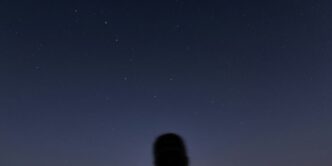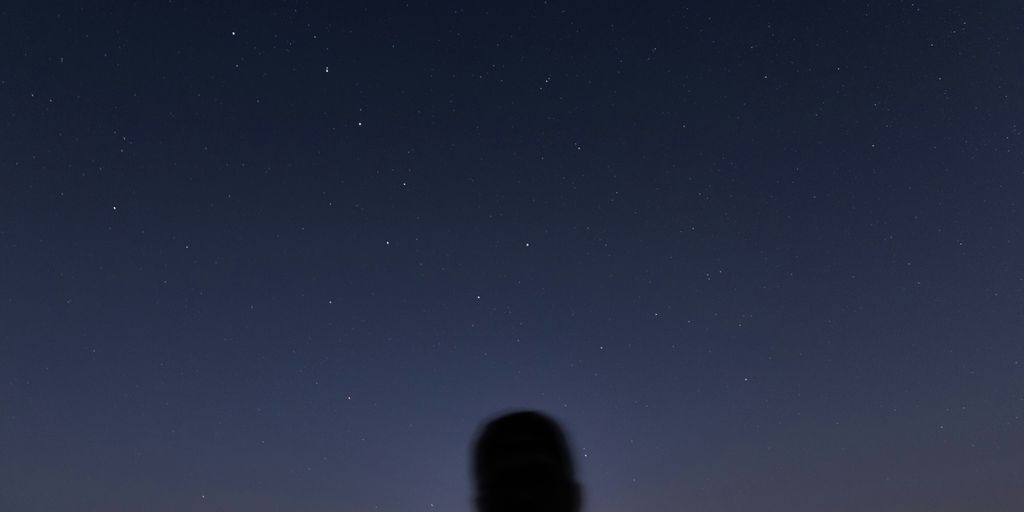Looking up at the night sky is pretty amazing, right? There’s just so much out there. If you’re into finding constellations, planets, or even satellites, a good app can make a huge difference. These days, there are tons of options to help you figure out what you’re seeing. This article will help you pick the best constellation app for your next outdoor adventure.
Key Takeaways
- Figure out what you need from an app before you download anything. Do you just want to find constellations, or do you need something more advanced?
- Some apps are free, and some cost money. Often, the free ones are good enough to start, especially if you’re new to stargazing.
- A really good app will show you the sky in real-time using your phone’s camera. This is called augmented reality (AR).
- Look for features like a night vision mode (red screen) to keep your eyes adjusted to the dark. Also, offline access is super helpful if you’re out in the middle of nowhere.
- The best constellation app can also help you keep track of things like meteor showers or even the Northern Lights. Some can even connect to telescopes!
Choosing the Best Constellation App
Understanding Your Stargazing Needs
Before you download a stargazing app, think about what you want to get out of it. Are you a complete beginner just trying to identify a few bright stars? Or are you an experienced amateur astronomer looking for advanced features like telescope control? Knowing your level of experience and what you hope to achieve will help you narrow down the options. For example, a beginner might want something with a simple interface and lots of visual aids, while an advanced user might prioritize features like detailed star catalogs and astrophotography planning tools.
Key Features to Look For
There are a ton of features that constellation apps can have, but some are more important than others. Here’s a quick rundown of some key things to consider:
- Real-time sky mapping: This is the core function of any good constellation app. It uses your phone’s sensors to show you what’s in the sky above you in real time.
- Augmented reality (AR): AR mode overlays the app’s display onto your actual view of the sky, making it easier to identify constellations and stars.
- Offline functionality: If you plan on stargazing in remote areas, make sure the app can work without an internet connection.
- Night mode: A red-screen mode helps preserve your night vision.
- Star catalogs: The bigger the star catalog, the more objects the app can identify.
Free Versus Paid Options
Many constellation apps offer both free and paid versions. Free apps are a great way to get started, but they often have limited features or ads. Paid apps usually offer more advanced features, larger star catalogs, and no ads. It really depends on your budget and how serious you are about stargazing. Some free apps, like Star Chart, are surprisingly good and might be all you need. Others, like SkySafari, have powerful features but come with a price tag. Consider trying out a few free apps first to see what features you really need before investing in a paid app.
Top-Rated Constellation Apps for Beginners

Star Chart: Your Gateway to the Cosmos
If you’re just starting out with stargazing, Star Chart is a fantastic free option. It uses your phone’s GPS to show you what’s visible in the night sky above you. The app draws on a library of over 120,000 stars and 88 constellations. Tap on any star to learn more about it, like its brightness and distance. It’s really useful if you’re trying to set up a telescope. If you want more, paid upgrades give you info on meteor showers, dwarf planets, and more.
Sky Guide: Intuitive and Informative
Sky Guide is another great app for beginners. Like other stargazing apps, it uses your phone to create a dynamic map of the sky. It shows constellations, planets, satellites, and stars. It helps you learn constellations by overlaying figures, like a bear over Ursa Major. One of the best things about Sky Guide is that it works without Wi-Fi or GPS, which is perfect if you’re camping. It also suggests nightscape events based on your location, like solar or lunar eclipses. It’s a really dynamic map of the night sky.
Stellarium: Web-Based Exploration
Stellarium is a bit different because it’s primarily web-based, but it’s still great for beginners. It’s a free, open-source planetarium that shows a realistic sky in 3D. You can see stars, constellations, planets, and nebulae just like you would with the naked eye, binoculars, or a telescope. It’s super helpful for planning your stargazing sessions. You can set the date, time, and location to see what the sky will look like. It’s a great way to learn about the night sky from your computer before you even go outside. Plus, it’s free!
Advanced Constellation Apps for Enthusiasts
For those who’ve moved beyond basic constellation identification and are eager to explore the cosmos in greater depth, several apps provide advanced features and capabilities. These apps often come with a steeper learning curve but offer a wealth of information and control for the serious amateur astronomer.
SkySafari 7 Plus: A Planetarium in Your Pocket
SkySafari 7 Plus is a powerhouse for astronomy enthusiasts. It packs a huge database of stars, planets, and deep-sky objects. Think of it as a full-fledged planetarium that fits right in your pocket. It goes way beyond just showing you where things are in the sky; it offers detailed information about each object, including its distance, magnitude, and physical properties. It’s a great tool for planning observing sessions and learning more about the universe. SkySafari 7 Pro is an essential app for serious astronomers.
Telescope Integration and Control
One of the standout features of advanced constellation apps is their ability to integrate with and control computerized telescopes. This allows you to use the app to point your telescope at specific objects in the sky, making it much easier to find faint or distant targets. The process usually involves connecting your telescope to your mobile device via Wi-Fi or Bluetooth, and then using the app’s interface to control the telescope’s movements. It’s like having a personal robotic assistant for your stargazing sessions.
Here’s a quick rundown of what telescope control usually involves:
- Alignment: Aligning the telescope with the sky, often using bright stars as reference points.
- GoTo Functionality: Selecting an object in the app and commanding the telescope to automatically point to it.
- Tracking: Keeping the telescope pointed at the object as it moves across the sky due to Earth’s rotation.
Astrophotography Planning Tools
For those interested in capturing stunning images of the night sky, advanced constellation apps offer a range of tools to help with astrophotography planning. These tools can help you determine the best time to image a particular object, calculate exposure times, and even simulate the field of view of your telescope and camera combination. This is super useful for making sure you get the shot you want. Some apps even integrate with weather services to provide information on cloud cover and seeing conditions, which are critical factors for successful astrophotography.
Here are some common astrophotography planning features:
- Object Visibility: Determining when an object will be above the horizon and at its highest point in the sky.
- Field of View Simulation: Visualizing how an object will appear through your telescope and camera.
- Exposure Calculation: Estimating the optimal exposure time based on your equipment and sky conditions.
Essential Features for Any Best Constellation App
When you’re picking out a constellation app, it’s easy to get lost in all the options. Some apps are super basic, while others are packed with features you might not even need. But there are a few things that every good stargazing app should have. Let’s break down the must-haves.
Real-Time Sky Mapping with AR
The ability to point your phone at the sky and see what’s what in real-time is a game-changer. Augmented reality (AR) takes this to the next level. Instead of just showing you a map, AR overlays the constellations and planets onto your actual view of the sky. It’s like having a personal planetarium in your pocket. I remember the first time I used an AR feature; I was able to easily identify constellations I’d struggled with for ages. It makes learning the night sky so much more intuitive. Star Tracker app works on iOS and Android to show you 88 constellations.
Night Vision and Red-Screen Mode
Stargazing is all about preserving your night vision. Regular phone screens are way too bright and can ruin your ability to see faint stars. That’s where night vision and red-screen modes come in. These modes dim the screen and shift the colors to red, which is less disruptive to your eyes. Trust me, after using a red-screen mode, you’ll never go back. It makes a huge difference in what you can see. Some apps, like Sky View, even let you adjust the intensity of the red filter. It’s a small feature, but it makes a big difference.
Offline Functionality for Remote Viewing
Let’s face it: the best stargazing spots are often far from cell service. That’s why offline functionality is so important. A good constellation app should let you download star charts and other data so you can use it even when you’re off the grid. I learned this the hard way on a camping trip last year. My fancy app was useless without a signal, and I ended up just guessing at constellations. Now, I always make sure my app has offline capabilities. Here’s a quick rundown of why it matters:
- Location Independence: View the night sky from anywhere, regardless of internet access.
- Data Preservation: Avoid using up mobile data in remote areas.
- Reliability: Ensures the app functions even without a connection.
Beyond Constellations: Tracking Celestial Events
While learning constellations is awesome, the night sky has so much more to offer! Many apps go beyond just identifying patterns of stars and let you track all sorts of cool celestial events. It’s like having a personal guide to the cosmos, keeping you informed about what’s happening above us.
Calendar of Upcoming Night-Sky Events
Most constellation apps now include a calendar feature. This is super handy for planning your stargazing sessions. Instead of just randomly going out and hoping to see something, you can check the calendar for upcoming meteor showers, lunar eclipses, planetary alignments, and other cool stuff. Some calendars even let you set reminders so you don’t miss anything! It’s a great way to make sure you’re always looking up at the right time.
Monitoring Aurora Activity with SpaceWeatherLive
Want to see the Northern Lights? Some apps integrate data from sites like SpaceWeatherLive to give you real-time updates on aurora activity. These apps use data about solar flares and geomagnetic storms to predict the likelihood of seeing an aurora in your area. It’s not a guarantee, of course, but it definitely increases your chances of witnessing this amazing phenomenon. You can even get notifications when aurora activity is high, so you can grab your gear and head out for some aurora hunting. Here’s a quick guide to understanding the Kp-index, a common measure of geomagnetic activity:
| Kp-index | Aurora Visibility | Description |
|---|---|---|
| 0-3 | Very Low | Aurora unlikely in most locations. |
| 4 | Low | Possible in high-latitude regions. |
| 5 | Moderate | Possible in mid-latitude regions. |
| 6-9 | High to Extreme | Aurora likely in a wide range of latitudes. |
Tracking Satellites and Comets
Beyond planets and stars, you can also track satellites and comets with some apps. Ever wonder what that bright light moving across the sky is? It could be the International Space Station! Many apps let you search for specific satellites and show you their paths across the sky. You can even set alerts to let you know when a particular satellite will be visible from your location. Tracking comets is a bit trickier, as they are less predictable, but some apps provide data on currently visible comets, including their location and brightness. This is a great way to add another layer of excitement to your stargazing adventures. You can even use star tracker apps to locate them.
How We Test the Best Constellation Apps
Rigorous Review Process and Criteria
When we set out to find the best constellation apps, we didn’t just download a few and call it a day. We put each app through a proper workout. Our review process is designed to mimic how a real stargazer would use the app in the field. We look at everything from ease of use to the accuracy of the star charts. We also consider how well the app performs in different lighting conditions and how intuitive the interface is.
Hands-On Experience and Expert Evaluation
It’s not enough to just look at the specs. Our team, which includes both experienced stargazers and tech-savvy individuals, spends quality time with each app. We actually go outside, under the night sky, and use the apps to identify constellations, planets, and other celestial objects. This hands-on approach allows us to assess the app’s real-world performance and identify any potential issues. We also evaluate how well the app integrates with other stargazing tools, such as telescopes and binoculars.
Ensuring Editorial Independence
Our reviews are completely unbiased. We don’t accept payments or incentives from app developers. Our goal is to provide you with honest and reliable information so you can make the best choice for your needs. We focus on providing transparent buying advice on stargazing apps, whether you should purchase one or not. We believe that editorial independence is crucial for maintaining the trust of our readers.
Maximizing Your Stargazing Experience
Pairing Apps with Stargazing Gear
Okay, so you’ve got your constellation app all set up. Now what? Well, think about pairing it with some actual stargazing gear to really take things to the next level. A decent pair of binoculars can make a huge difference, letting you see fainter objects that are invisible to the naked eye. And if you’re serious, consider investing in a telescope. Some apps even have features to help you control smart telescope directly from your phone or tablet, which is pretty cool. Don’t forget a red flashlight to preserve your night vision!
Learning About Cultural and Scientific Context
Stargazing isn’t just about pointing your phone at the sky and seeing what pops up. It’s about connecting with something bigger than yourself. Take some time to learn about the cultural stories and myths associated with the constellations. Many cultures have their own unique interpretations of the stars, and it’s fascinating to explore these different perspectives. Also, brush up on the scientific facts about stars, planets, and galaxies. Understanding the science behind what you’re seeing makes the experience so much more rewarding. It’s a great way to appreciate the vastness and complexity of the universe.
Planning Your Next Stargazing Adventure
Don’t just wait for a clear night to pop outside and look up. Plan your stargazing sessions in advance! Check the weather forecast, find a dark location away from city lights, and use your app to see what celestial events are coming up. Maybe there’s a meteor shower, a planetary alignment, or a lunar eclipse you won’t want to miss. Pack some snacks, grab a blanket, and invite some friends to join you. Stargazing is even better when you share it with others. Remember to follow Leave No Trace principles to keep these areas pristine.
Wrapping It Up
So, there you have it. Picking the right constellation app really depends on what you want to do out there. Are you just starting out and need something simple? Or are you a seasoned pro with a fancy telescope? There’s an app for pretty much everyone. The main thing is to find one that makes your stargazing more fun and helps you learn a bit about the night sky. Go ahead, download a few, mess around with them, and see which one feels right. Happy stargazing!
Frequently Asked Questions
What is a constellation app?
A constellation app helps you find and identify stars, planets, and constellations in the night sky. Many use your phone’s camera and location to show you what’s above you in real-time. They can also provide details about what you’re seeing.
What features should I look for in a good constellation app?
Look for apps that are easy to use, have a clear sky map, and offer information about celestial objects. Features like night vision mode (red screen) and offline access are also very helpful, especially if you’re stargazing in remote areas.
Are there good free constellation apps, or do I need to pay?
Many great constellation apps are free, like Star Chart or Stellarium’s web version. These are perfect for beginners. Paid apps often offer more advanced features, like a larger database of objects, telescope control, or special tools for astrophotography.
Can these apps help me see better in the dark?
Absolutely! Many apps have a ‘night mode’ or ‘red-screen’ option. This changes the screen color to red, which helps your eyes stay adjusted to the dark. Using a bright white screen can make it harder to see faint stars.
Can I connect a constellation app to my telescope?
Yes, some advanced apps can connect to certain telescopes, allowing you to control the telescope’s movement from your phone. This makes it easier to point your telescope at specific objects in the sky.
Do these apps show more than just constellations?
Many apps include calendars of upcoming events like meteor showers, eclipses, and planetary alignments. Some can even help you track the Northern Lights or find satellites passing overhead.














